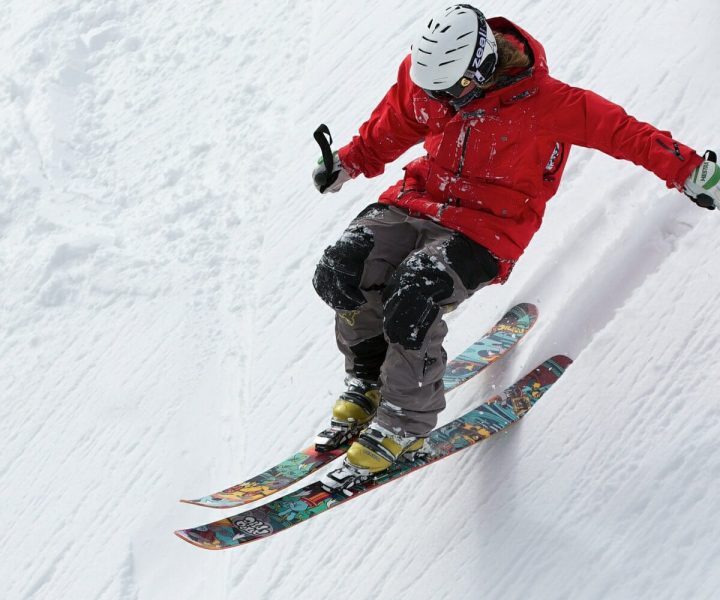
Winter sports can be the best part of winter, letting us appreciate nature in a completely different way. Two of the most popular snow sports are alpine skiing and snowboarding, and while they add thrills to your mountain adventure, you need to seriously consider the conditions of these environments, and prepare yourself to minimize your risk of injury.
You can still participate in snow sports and have a fantastic day out; you just need planning, preparation, and proper equipment. Don’t let an injury leave you on the couch this winter, read on for our tips on avoiding a cold-related injury.
Cold-related injuries
According to the American Journal of Sports Medicine, the most common injuries among snowboarders are shoulder, ankle, and wrist injuries, while skiers most suffer from knee ligament injuries. The study also reflected that skiing carries a risk of injury of about two injuries per 1,000 skier days, meaning that two people will sustain an injury requiring medical attention for every 1,000 people skiing that day. The risk of injury for snowboarders is slightly higher.
Generally, however, the most common cold-related injuries relating to snow sports and cold conditions are the following:
Blisters: Blisters are caused by the friction of ill-fitting footwear and wet socks.
Strains and sprains: Cold connective tissues and muscles are stiffer, so they are more prone to being injured. The most common injuries occur in muscles and ligaments in the wrists, shoulders, spinal joints and knees.
Hypothermia: The body’s core temperature is around 98.6℉, and hypothermia happens when the body’s temperature falls below 95℉. Symptoms include drowsiness, shivering, and lack of coordination. If not treated quickly, hypothermia can be fatal.
Frostbite: Frostbite happens when your skin tissues freeze, blocking the movement of blood through your capillaries. The skin will be deprived of nutrients and oxygen, causing it to turn blue and die.
Head injuries: Most snow sports are high-speed in nature, so an impact to the head can have serious consequences.
Winter sport preparation
If you want to avoid a cold-related sports injury, then you want to take the necessary precautions. Here are a few things you can do to prepare yourself for taking part in winter sports:
- Maintain an adequate level of fitness year-round, and know your limits. Don’t push yourself beyond those limits, as an injury is more likely to happen in that scenario.
- Work on the muscles required for your preferred snowsport for a few months before winter. For example, skiing requires you to use your quadriceps, so if you’re planning on going downhill skiing, make sure you strengthen those muscles with regular pre-season training.
- Adapt your body to cold weather exercise. For example, train outdoors for a few weeks before snowboarding, instead of working out inside a warm and cozy gym.
- Cold tendons, ligaments, and muscles are more vulnerable to injuries. Before any sport, thoroughly warm up and stretch.
- Take into consideration the colder temperatures, and spend more time than usual stretching and warming up.
- Afterwards, thoroughly cool down with sustained and slow stretching.
Safety suggestions
While preparation is important, you should also follow a few safety guidelines while taking part in your favorite cold-weather sport. Follow these tips to help avoid potential injuries:
- Never attempt snow sports by yourself. Grab along at least one friend, and use the buddy system, checking for any injuries or hypothermia symptoms.
- Make sure that your gear and clothing fit correctly. If your skis are not properly adjusted, they can put extra strain on your knee and ankle joints, making you more prone to a sprain.
- Use an SPF of at least 30+ on all your exposed skin areas.
- Drink lots of water before, during, and after any snow sport.
- Don’t drink any alcohol. You may think that alcohol will warm you up, but instead, it narrows your blood vessels and increases your risk of hypothermia.
Protecting your feet
Your feet are particularly vulnerable to cold related-injuries, so make sure you:
- Treat any pre-existing ailments, such as blisters, before engaging in a snow sport.
- If you have diabetes or another medical condition that could affect your feet, talk to your doctor for advice and suggestions beforehand.
- Make sure your feet don’t get cold. Your footwear should be appropriate for the sport you’re participating in (such as waterproof and insulated boots), and don’t wear cotton socks. The fabric should be able to wick moisture away from your skin.
- Your footwear needs to fit correctly, as footwear that’s too loose or tight can contribute to cold-related injuries.
- If you get wet feet, seek shelter and dry them out as quickly as possible. The skin tissue of cold and wet feet can lead to frostbite.
No matter what sport you’re taking part in this winter, always be sure to take the necessary precautions and follow safety guidelines. As long as you are well prepared and wear the appropriate gear, you can reduce the chances of getting a cold-related injury. Be safe out there!
 Your Privacy Choices
Your Privacy Choices
 The
The